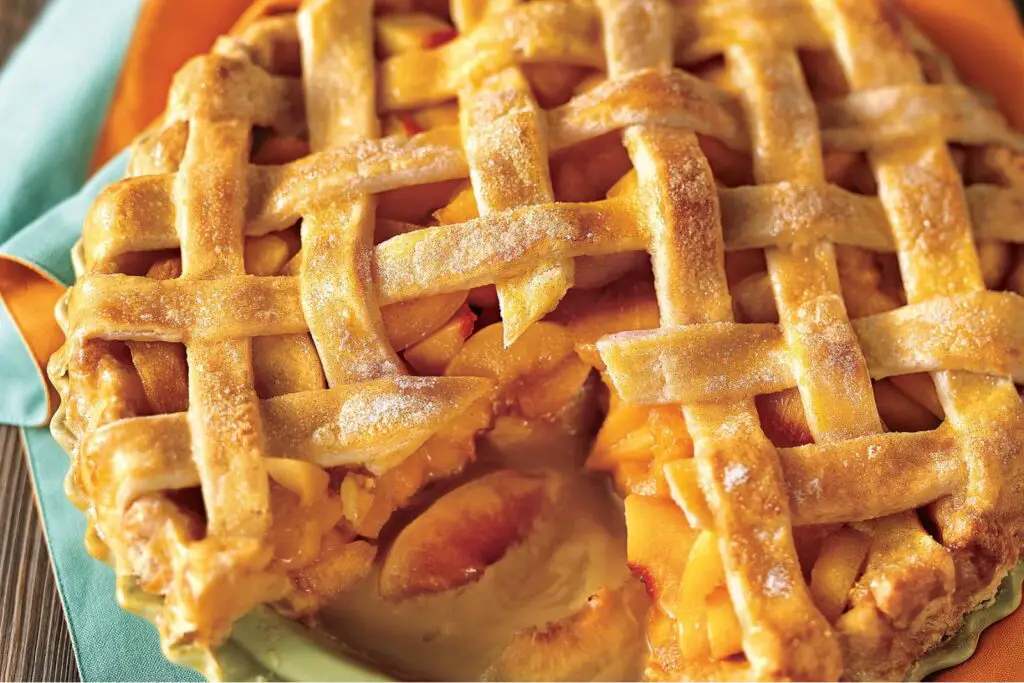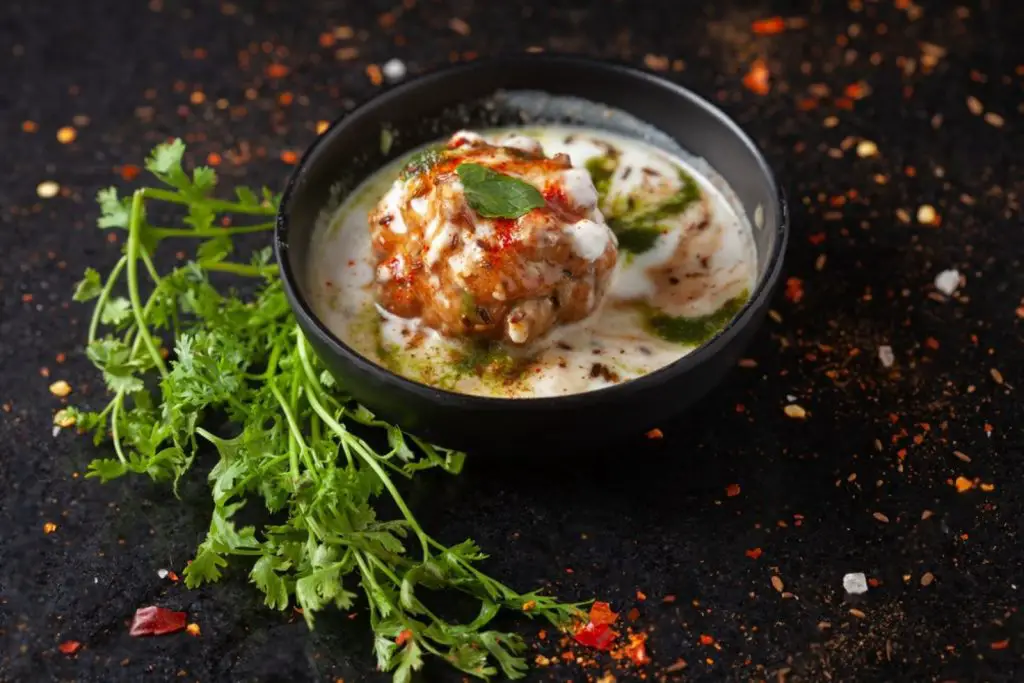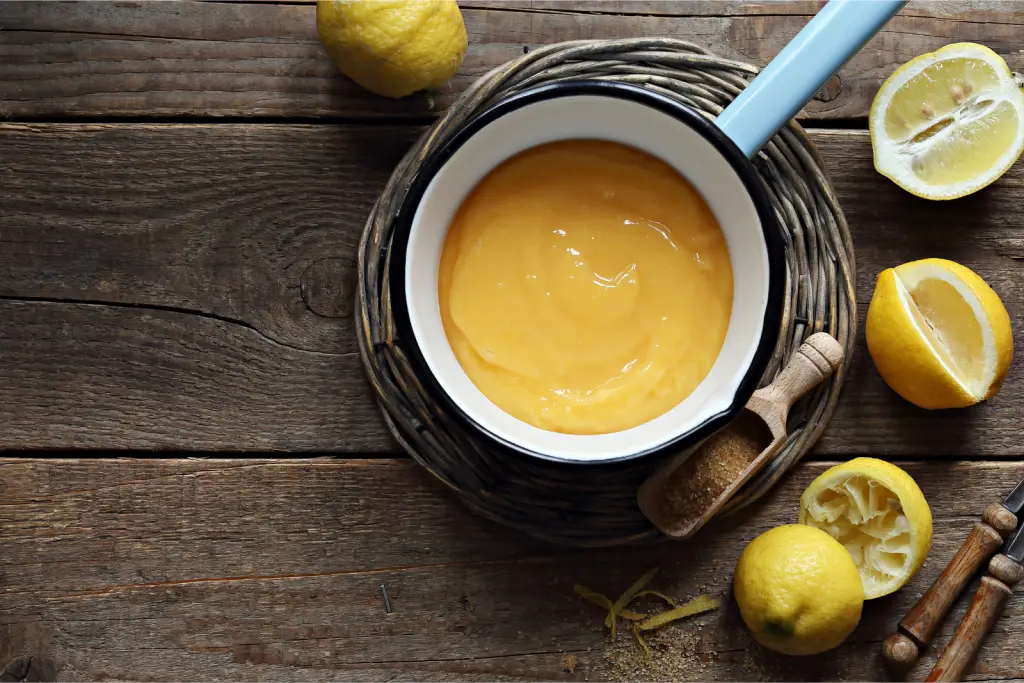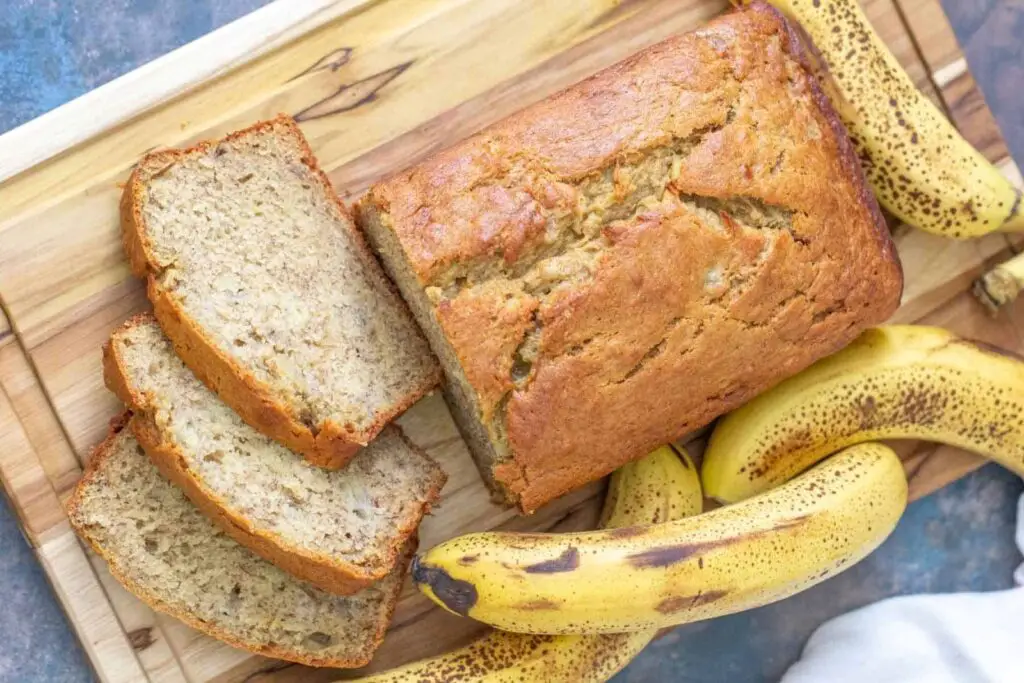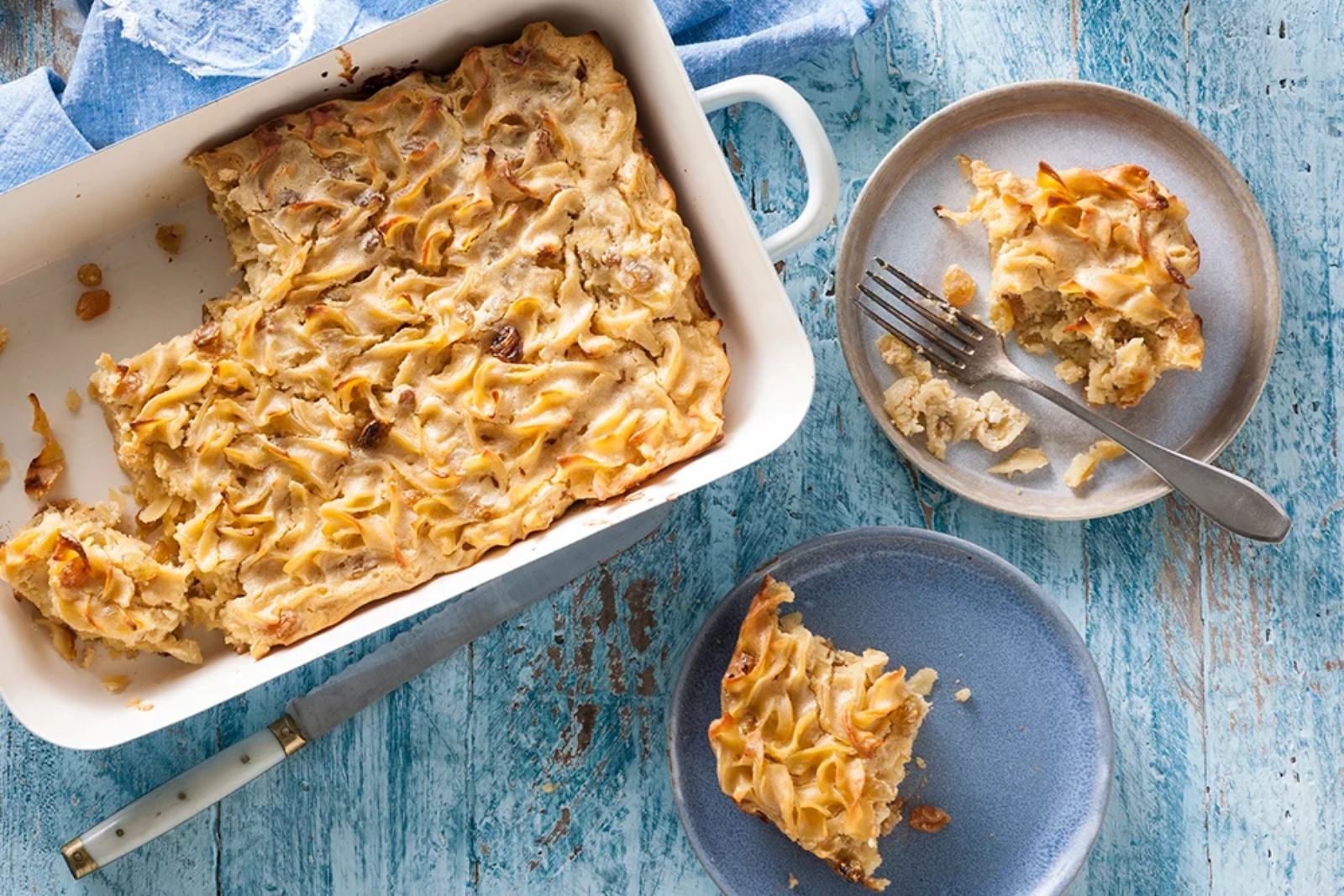
Noodle kugel is a traditional Jewish dish made with egg noodles, eggs, and various other ingredients. It is a delicious and comforting dessert or side dish that is often enjoyed during holidays and special occasions. If you find yourself with leftovers or want to make a big batch in advance, freezing noodle kugel is a great option to preserve its flavors and textures. By following a few simple steps, you can successfully freeze noodle kugel and have a tasty treat ready to enjoy whenever you desire. This article presents a step-by-step guide on freezing noodle kugel to ensure its quality remains intact for future consumption.
Here’s a guide on how to freeze noodle kugel:
Step 1: Prepare the noodle kugel
To begin freezing noodle kugel, you’ll need to start by preparing the dish according to your preferred recipe. Noodle kugel can be made in various ways, allowing for personalization and creativity in the kitchen. Whether you prefer a classic version with raisins and cinnamon or want to experiment with a modern twist by adding chocolate chips or other flavorful ingredients, the choice is yours.
Following your recipe, cook the noodle kugel thoroughly until it reaches the desired consistency. This step is essential because undercooked kugel may not freeze or reheat properly, leading to an unpleasant texture or uneven cooking. Cooking the kugel thoroughly ensures that it maintains its intended taste and texture even after freezing.
During the preparation process, it’s important to pay attention to the ingredients and instructions provided in your recipe. Follow the cooking times and temperatures carefully to achieve the best results. Once the noodle kugel is cooked to perfection, you can proceed to the next step of the freezing process.
Step 2: Cool the kugel
After preparing the noodle kugel, the next step before freezing is to allow it to cool completely. Cooling the kugel is crucial to maintain its quality during the freezing process. Here’s why it’s important:
- Prevents condensation: When hot or warm food is placed directly in the freezer, it can cause condensation to form inside the packaging. This moisture can lead to ice crystals forming on the surface of the kugel, affecting its texture and taste. By cooling the kugel to room temperature, you minimize the risk of excess moisture and condensation.
- Preserves texture: Cooling the kugel before freezing helps retain its desired texture. If the kugel is frozen while still warm, the moisture inside the dish can turn into ice crystals, which may cause the noodles to become mushy or the custard to separate. Allowing the kugel to cool properly ensures that it maintains its intended consistency and texture even after freezing.
- Food safety considerations: Rapidly cooling hot food before freezing is essential for food safety. Placing hot food directly in the freezer can increase the temperature of the freezer, potentially affecting the safety and quality of other frozen items. Cooling the kugel to room temperature reduces the risk of bacterial growth and ensures that it freezes evenly and safely.
To cool the noodle kugel, place it on a wire rack or a heat-resistant surface, away from direct heat sources. This allows for air circulation around the dish, facilitating faster and more even cooling. It’s important to give the kugel enough time to cool completely, which typically takes about 1-2 hours, depending on the size and thickness of the dish.
Step 3: Slice into portions
Once the noodle kugel has cooled completely, it’s time to slice it into individual portions or the desired serving sizes before freezing. This step offers several benefits and makes it more convenient when you’re ready to defrost and reheat the kugel later. Here’s why it’s important:
- Portion control: Slicing the kugel into individual portions allows for better portion control. It enables you to freeze and thaw only the amount you need, preventing wastage. Instead of having to thaw the entire dish, you can easily take out and reheat a single serving or as many portions as required.
- Even freezing and reheating: By slicing the kugel into portions, you promote more even freezing and reheating. Smaller portions freeze and thaw more quickly and uniformly compared to freezing the entire dish. This ensures that each portion maintains its texture and taste consistently throughout.
- Time-saving: Having pre-sliced portions of noodle kugel saves time when you’re ready to enjoy it. You can simply take out the desired number of portions from the freezer without the need to thaw the entire dish. This is especially beneficial for those moments when you want a quick and hassle-free meal or dessert.
When slicing the noodle kugel, you can use a sharp knife or a serrated knife to achieve clean and even cuts. Consider the serving sizes you prefer or the portion sizes that would be convenient for your needs. You can slice the kugel into squares, rectangles, or even wedges, depending on your preference.
After slicing, it’s recommended to separate the portions using wax paper or parchment paper. This prevents the individual portions from sticking together during freezing, making it easier to take out only what you need later.
Step 4: Wrap in plastic wrap
After slicing the noodle kugel into individual portions, the next step is to wrap each portion tightly with plastic wrap. This packaging method helps protect the kugel from freezer burn and maintains its quality during freezing. Here’s why it’s important:
- Prevents freezer burn: Freezer burn is a condition that occurs when food is exposed to air in the freezer for an extended period. It leads to dehydration and the formation of ice crystals on the surface of the food, resulting in changes in texture and taste. By wrapping each portion of the noodle kugel tightly with plastic wrap, you create a barrier that helps prevent air from reaching the kugel, reducing the risk of freezer burn.
- Maintains moisture: The plastic wrap acts as a protective layer that helps retain moisture within the noodle kugel. This is especially important for dishes like kugel that contain custard or creamy components. By sealing in the moisture, the kugel retains its desired texture and prevents it from becoming dry or rubbery during freezing.
- Easy portion management: Wrapping each portion individually with plastic wrap allows for easy portion management. It enables you to take out only the number of servings you need without disturbing the remaining portions. This flexibility is particularly convenient when you want to enjoy the kugel in smaller quantities or over multiple occasions.
Alternatively, you can use aluminum foil or freezer-safe containers for packaging the noodle kugel. These options provide similar benefits to plastic wrap, ensuring proper protection and preventing freezer burn. If using aluminum foil, make sure to wrap the portions tightly to minimize air exposure. Freezer-safe containers are a good choice if you prefer a more durable and reusable option for storing the kugel.
When wrapping each portion, ensure that there are no exposed areas. Make sure the plastic wrap tightly adheres to the surface of the kugel, leaving no gaps or openings. This helps maintain the kugel’s quality and prevents any potential freezer odors from affecting its flavors.
Step 5: Place in a freezer bag
Once you have wrapped each portion of the noodle kugel, the next step is to transfer them into a freezer bag. Placing the wrapped portions in a freezer bag provides an additional layer of protection against freezer burn and helps maintain the freshness of the kugel. Here’s why this step is important:
- Minimizes freezer burn: Freezer burn can occur when food is exposed to air in the freezer for an extended period. By placing the wrapped kugel portions in a freezer bag, you create a more secure and airtight environment. This minimizes air exposure and reduces the chances of freezer burn, ensuring that the kugel retains its quality and taste.
- Maintains freshness: The freezer bag acts as a barrier against odors and potential contaminants in the freezer. It helps maintain the freshness of the noodle kugel and prevents any unwanted flavors from permeating the dish. This is particularly important when storing the kugel alongside other frozen items that might have strong odors.
- Efficient use of freezer space: Freezer bags allow for efficient use of freezer space. By placing the wrapped kugel portions in a bag, you can arrange them in a way that maximizes space and minimizes any unnecessary clutter. This ensures that the portions are stored neatly and can be easily accessed when needed.
When placing the wrapped kugel portions into the freezer bag, it’s important to squeeze out as much air as possible from the bag before sealing it. Excess air can contribute to the formation of ice crystals and potentially compromise the texture and taste of the kugel. Squeezing out the air helps create a more compact and airtight packaging, minimizing the risk of freezer burn and maintaining the kugel’s freshness.
Ensure that the freezer bag is made of sturdy, freezer-safe material to provide optimal protection for the kugel. It’s also a good practice to label the freezer bag with the contents and the date of freezing. This helps you keep track of the kugel’s storage time and easily identify it when needed.
Step 6: Label and date the bags
After placing the wrapped portions of noodle kugel into the freezer bags, it’s important to label each bag with the contents and the date of freezing. This simple yet crucial step helps you keep track of the kugel and ensures that you use the oldest portions first. Here’s why labeling and dating the bags is important:
- Easy identification: Labeling each freezer bag with the contents helps you quickly identify what’s inside without the need to open or inspect the bag. This is especially helpful when you have multiple types of kugel or other frozen items in the freezer. By labeling the bags, you can easily distinguish between different flavors or variations of the kugel.
- Organizational purposes: Labeling the bags with the date of freezing helps you organize your freezer and manage the kugel’s storage time. It allows you to keep track of how long each portion has been frozen, ensuring that you consume them within the recommended storage period. This prevents the kugel from being kept in the freezer for too long, which could affect its quality and taste.
- Use the oldest portions first: By dating the freezer bags, you can easily identify which portions of the noodle kugel were frozen first. This ensures that you use the oldest portions first, following the principle of “first in, first out” (FIFO). Consuming the older portions first helps maintain a rotation system, ensuring that all portions are used before they exceed their recommended storage time.
When labeling the freezer bags, use a marker or a pen that writes clearly on the bag’s surface. Write down the contents of the bag (e.g., “Noodle Kugel”) and the date of freezing. Place the label in a visible area of the bag, such as the front or the top, to easily identify the information.
Step 7: Store in the freezer
Once you have labeled and dated the freezer bags containing the noodle kugel portions, it’s time to transfer them to the freezer for long-term storage. Proper storage in the freezer is essential to maintain the quality of the kugel. Here’s why this step is important:
- Temperature consistency: The freezer provides a controlled environment with consistent low temperatures, which is crucial for preserving the quality and safety of frozen food. Placing the labeled freezer bags of noodle kugel in the freezer ensures that they are stored at the appropriate temperature, preventing spoilage and maintaining the kugel’s flavors.
- Flat positioning: When storing the freezer bags in the freezer, it’s advisable to place them in a flat position. This helps maintain the shape and integrity of the kugel portions. Flat positioning ensures that the kugel freezes evenly and prevents any shifting or distortion of the portions, which could occur if they were stored on top of each other at an angle.
- Avoid stacking until fully frozen: It’s important to avoid stacking the freezer bags until the noodle kugel portions are fully frozen. Stacking them prematurely can lead to uneven freezing and may cause the portions to stick together. By allowing the portions to freeze individually in a flat position first, you ensure that they maintain their separate identities and are easily separable when needed.
When storing the freezer bags, find a designated space in your freezer where they can lie flat without being disturbed. This can be a shelf or a flat surface. Arrange the bags in a single layer, ensuring that there is enough space between them for proper air circulation. If you have a lot of freezer bags, you can stack them once the kugel portions are fully frozen.
It’s worth mentioning that the optimal storage time for frozen noodle kugel is typically around 2-3 months. Beyond that time, the kugel may start to deteriorate in quality. Refer to the label on the freezer bags to keep track of the storage duration and prioritize consuming the oldest portions first.
Other related questions
How can I defrost noodle kugel?
To defrost noodle kugel, follow these steps:
- Transfer the frozen noodle kugel from the freezer to the refrigerator. Place it on a plate or in a shallow dish to catch any condensation that may occur during thawing.
- Allow the kugel to defrost in the refrigerator overnight or for approximately 24 hours. The cold temperature of the refrigerator ensures a slow and safe thawing process, maintaining the quality of the kugel.
- Check the kugel for complete thawing by gently pressing the center. It should be soft and no longer frozen. If there are still frozen sections, return it to the refrigerator for additional time.
- Once fully thawed, the noodle kugel can be enjoyed as is, or you can choose to reheat it before serving. To reheat, follow the instructions in your original recipe or consider the options below:
- Oven method: Preheat your oven to around 350°F (175°C). Place the thawed kugel in a baking dish and cover it with foil to prevent excessive browning. Bake for approximately 20-30 minutes or until heated through.
- Microwave method: Transfer individual portions of the thawed kugel onto a microwave-safe plate. Cover the plate with a microwave-safe cover or microwave-safe plastic wrap, leaving a small vent for steam to escape. Microwave on medium heat in short intervals, checking and stirring between each interval, until the kugel is heated evenly.
Should I thaw the frozen noodle kugel before reheating?
It is not necessary to thaw the frozen noodle kugel before reheating. You can directly place the frozen kugel in the oven or microwave, following the reheating instructions provided in the post. Just note that the cooking time may be slightly longer for frozen kugel.
Can I refreeze the noodle kugel?
No, it is generally not recommended to refreeze noodle kugel. Once the kugel has been thawed, it is best to consume it within a few days to maintain its quality and ensure food safety. Refreezing can affect the texture and taste of the kugel and may increase the risk of bacterial growth.
How do I know if the noodle kugel has gone bad after being frozen?
After being frozen, if the noodle kugel develops an off smell, unusual appearance, or shows signs of mold growth, it is likely spoiled and should be discarded. Additionally, if there is a significant change in texture, such as becoming excessively mushy or grainy, it may indicate deterioration. When in doubt, it is always better to err on the side of caution and prioritize food safety by not consuming the kugel if there are any doubts about its quality.
Can I freeze noodle kugel with cream cheese or sour cream?
Yes, you can freeze noodle kugel that contains cream cheese or sour cream. However, keep in mind that the texture of the dairy ingredients may change slightly upon thawing. It is recommended to slightly undercook the kugel if you plan to freeze it with these ingredients.
Can I freeze noodle kugel with toppings such as streusel or crumb topping?
It is generally best to freeze noodle kugel without the toppings. Toppings like streusel or crumb topping can become soggy or lose their texture during freezing and thawing. You can add fresh toppings before serving the thawed and reheated kugel for the best results.
Can I freeze noodle kugel made with gluten-free noodles?
Yes, noodle kugel made with gluten-free noodles can be frozen. However, it’s important to note that gluten-free noodles may have a slightly different texture after freezing and thawing. To minimize any changes, slightly undercook the noodles before assembling the kugel.
Can I freeze noodle kugel with different types of noodles?
Yes, you can freeze noodle kugel made with different types of noodles such as egg noodles, wide noodles, or even gluten-free noodles. Just ensure that the noodles are cooked al dente, as they may soften slightly during freezing and reheating.

